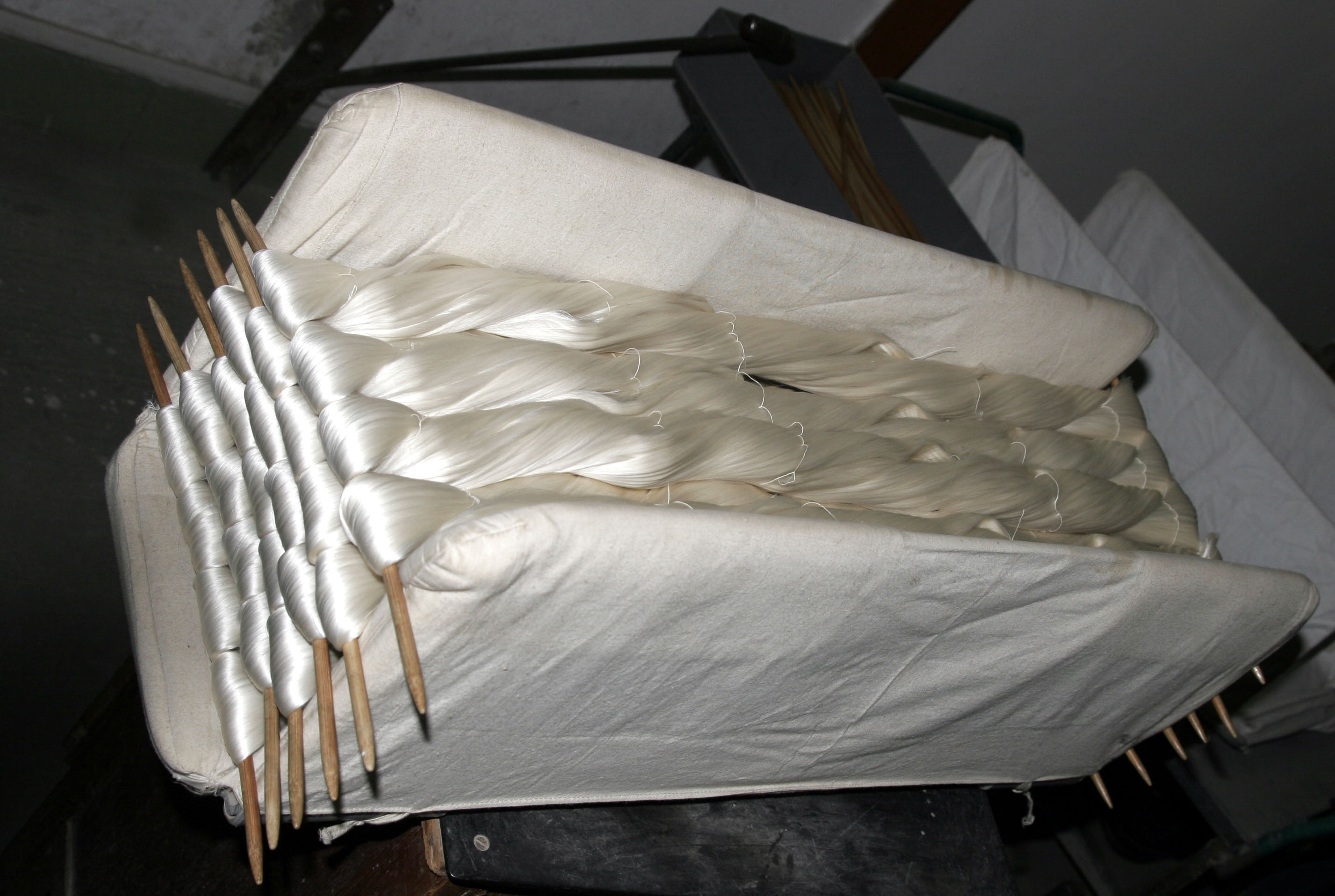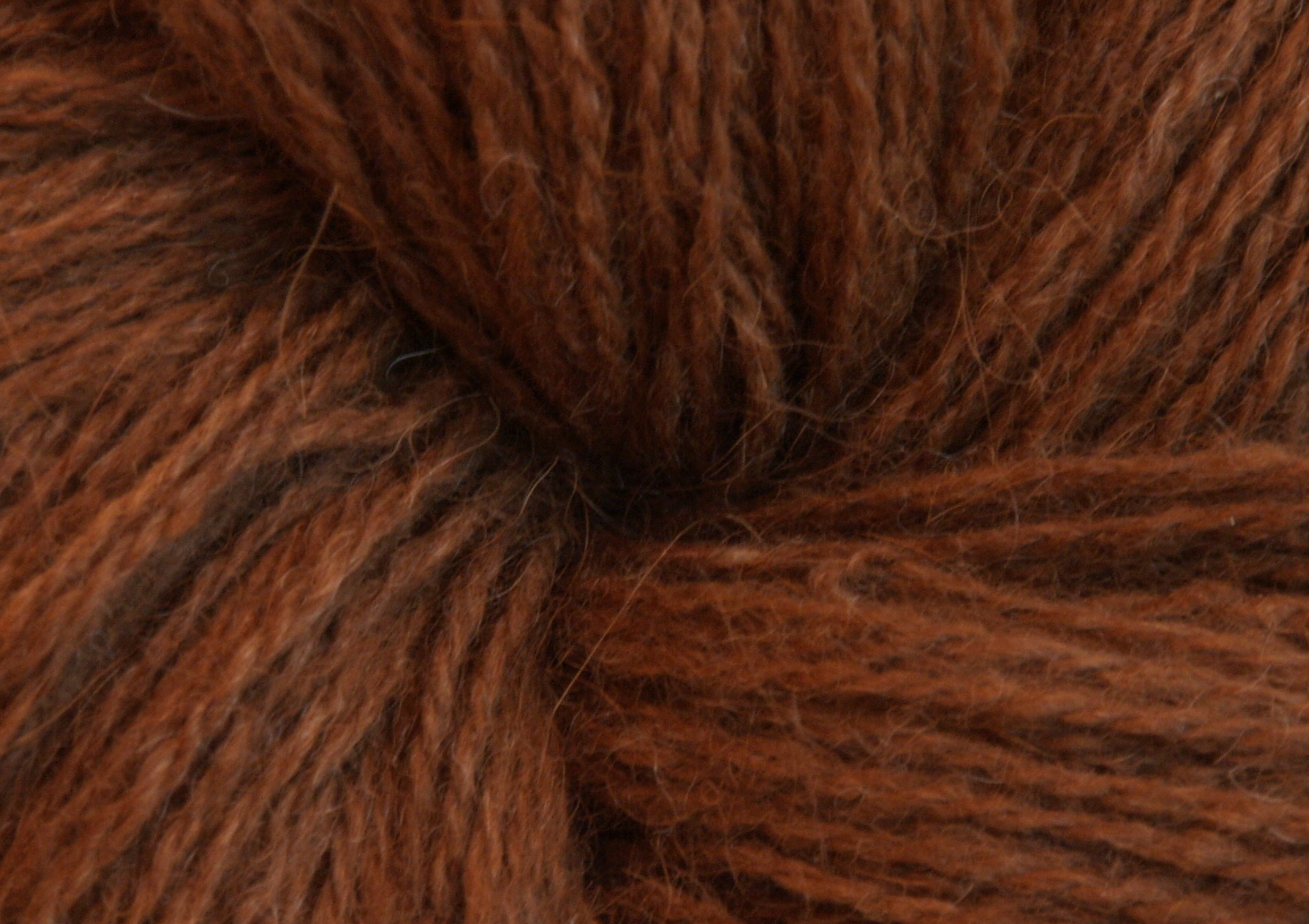Animal Fiber on:
[Wikipedia]
[Google]
[Amazon]
Animal fibers or animal fibres (see


spelling differences
Despite the various English dialects spoken from country to country and within different regions of the same country, there are only slight regional variations in English orthography, the two most notable variations being British and Americ ...
) are natural fiber
Natural fibers or natural fibres (see Spelling differences#-re, -er, spelling differences) are fibers that are produced by geology, geological processes, or from the bodies of plants or animals.
They can be used as a component of Composite mate ...
s that consist largely of certain proteins. Examples include silk
Silk is a natural fiber, natural protein fiber, some forms of which can be weaving, woven into textiles. The protein fiber of silk is composed mainly of fibroin and is most commonly produced by certain insect larvae to form cocoon (silk), c ...
, hair
Hair is a protein filament that grows from follicles found in the dermis. Hair is one of the defining characteristics of mammals.
The human body, apart from areas of glabrous skin, is covered in follicles which produce thick terminal and ...
/ fur (including wool
Wool is the textile fiber obtained from sheep and other mammals, especially goats, rabbits, and camelids. The term may also refer to inorganic materials, such as mineral wool and glass wool, that have some properties similar to animal w ...
) and feathers. The animal fibers used most commonly both in the manufacturing world as well as by the hand spinners are wool from domestic sheep
Sheep (: sheep) or domestic sheep (''Ovis aries'') are a domesticated, ruminant mammal typically kept as livestock. Although the term ''sheep'' can apply to other species in the genus '' Ovis'', in everyday usage it almost always refers to ...
and silk
Silk is a natural fiber, natural protein fiber, some forms of which can be weaving, woven into textiles. The protein fiber of silk is composed mainly of fibroin and is most commonly produced by certain insect larvae to form cocoon (silk), c ...
. Also very popular are alpaca fiber and mohair from Angora goats. Unusual fibers such as Angora wool from rabbits and Chiengora from dogs also exist, but are rarely used for mass production.
Not all animal fibers have the same properties, and even within a species the fiber is not consistent. Merino
The Merino is a list of sheep breeds, breed or group of breeds of domestic sheep, characterised by very fine soft wool. It was established in Spain near the end of the Middle Ages, and was for several centuries kept as a strict Spanish monop ...
is a very soft, fine wool
Wool is the textile fiber obtained from sheep and other mammals, especially goats, rabbits, and camelids. The term may also refer to inorganic materials, such as mineral wool and glass wool, that have some properties similar to animal w ...
, while Cotswold is coarser, and yet both Merino and Cotswold are types of sheep. This comparison can be continued on the microscopic level, comparing the diameter and structure of the fiber. With animal fibers, and natural fiber
Natural fibers or natural fibres (see Spelling differences#-re, -er, spelling differences) are fibers that are produced by geology, geological processes, or from the bodies of plants or animals.
They can be used as a component of Composite mate ...
s in general, the individual fibers look different, whereas all synthetic fiber
Synthetic fibers or synthetic fibres (in British English; see spelling differences) are fibers made by humans through chemical synthesis, as opposed to natural fibers that are directly derived from living organisms, such as plants like cott ...
s look the same. This provides an easy way to differentiate between natural and synthetic fibers under a microscope.
Silk

Silk
Silk is a natural fiber, natural protein fiber, some forms of which can be weaving, woven into textiles. The protein fiber of silk is composed mainly of fibroin and is most commonly produced by certain insect larvae to form cocoon (silk), c ...
is a "natural" protein
Proteins are large biomolecules and macromolecules that comprise one or more long chains of amino acid residue (biochemistry), residues. Proteins perform a vast array of functions within organisms, including Enzyme catalysis, catalysing metab ...
fiber
Fiber (spelled fibre in British English; from ) is a natural or artificial substance that is significantly longer than it is wide. Fibers are often used in the manufacture of other materials. The strongest engineering materials often inco ...
, some forms of which can be woven into textile
Textile is an Hyponymy and hypernymy, umbrella term that includes various Fiber, fiber-based materials, including fibers, yarns, Staple (textiles)#Filament fiber, filaments, Thread (yarn), threads, and different types of #Fabric, fabric. ...
s. The best-known type of silk is obtained from cocoons made by the larva
A larva (; : larvae ) is a distinct juvenile form many animals undergo before metamorphosis into their next life stage. Animals with indirect development such as insects, some arachnids, amphibians, or cnidarians typically have a larval phase ...
e of the silkworm '' Bombyx mori'' reared in captivity. Rearing of silks is called sericulture. Degummed fibers from ''B. mori'' are 5-10 μm in diameter. The shimmering appearance for which silk is prized comes from the fibers' triangular prism-like cross-sectional structure which allows silk cloth to refract incoming light at different angles.
The length of the silk fiber depends on how it has been prepared. Since the cocoon is made of one strand, if the cocoon is unwound carefully the fibers can be very long.
Spider silk is the strongest natural fiber known. The strongest dragline silk is five times stronger than steel and three times tougher than Kevlar. It is also highly elastic, the silk of the ogre-faced spider can be stretched six times its original length without damage. As of 2005, there is no synthetic material in production that can match spider silk, but it is actively being sought by the U.S. military for such applications as body armor, parachutes and rope. Genetically engineered goats have been raised to produce spider silk in their milk at a cost of around $1,500 per gram.
Wool
Wool
Wool is the textile fiber obtained from sheep and other mammals, especially goats, rabbits, and camelids. The term may also refer to inorganic materials, such as mineral wool and glass wool, that have some properties similar to animal w ...
is fiber derived from animal fur. Sheep are the principal source of wool, but fiber made from the hair of other mammals, such as alpacas, and rabbits, may also be called wool.
Alpaca
Alpaca fiber is sourced from alpacas. It is warmer than sheep's wool and lighter in weight. It is soft, fine, glossy, and luxurious. The thickness of the quality fiber is between 12-29 micrometers. Most alpaca fiber is white, but it also comes in various shades of brown and black. The most common type of alpaca fiber comes from a Huacaya.Angora
Angora wool or Angora fiber refers to the down coat produced by the Angora rabbit. There are many types of Angora rabbits - English, French, German, and Giant. Angora is prized for its softness, thin fibers of around 12-16 micrometers for quality fiber, and what knitters refer to as a halo (fluffiness). The fiberfelt
Felt is a textile that is produced by matting, condensing, and pressing fibers together. Felt can be made of natural fibers such as wool or animal fur, or from synthetic fibers such as petroleum-based acrylic fiber, acrylic or acrylonitrile or ...
s very easily. Angora fiber comes in white, black, and various shades of brown.
Bison
Bison fibers refer to the soft undercoat of theAmerican Bison
The American bison (''Bison bison''; : ''bison''), commonly known as the American buffalo, or simply buffalo (not to be confused with Bubalina, true buffalo), is a species of bison that is endemic species, endemic (or native) to North America. ...
. The coat of the bison protects the animal during harsh winter conditions, and consists of a coarse shiny overcoat, a coarse bulky midcoat, and a short dense undercoat. The undercoat is composed of fine, hollow guard hairs (average diameter of 59 micrometers) and down (average 18.5 micrometers). Downy fibers are typically chosen for textile applications. Bison fibers are grey or red-brown and about 2.5 cm long.
Cashmere
Cashmere wool is wool obtained from the Cashmere goat. Cashmere is characterized by its luxuriously soft fibers, with high napability and loft. In order for a natural goat fiber to be considered Cashmere, it must be under 18.5 micrometers in diameter and be at least 3.175 centimeters long. It is noted as providing a natural light-weight insulation without bulk. Fibers are highly adaptable and are easily constructed into fine or thick yarns, and light to heavy-weight fabrics.Mohair
Mohair is a silk-like fabric or yarn made from the hair of the Angora goat. It is both durable and resilient. It is notable for its high luster and sheen, and is often used in fiber blends to add these qualities to a textile. Mohair also takes dye exceptionally well.Sheep's wool
Wool has two qualities that distinguish it from hair or fur: it has scales which overlap like shingles on a roof and it is crimped; in some fleeces the wool fibers have more than 20 bends per inch. Wool varies in diameter from below 17 micrometers to over 35 micrometers. The finer the wool, the softer it will be, while coarser grades are more durable and less prone to pilling.Qiviut
Qiviut is the fine underwool of the muskox. Qiviut fibers are long (about 5 to 8 cm), fine (between 15 and 20 micrometers in diameter), and relatively smooth. It is approximately eight times warmer than sheep's wool and does not felt or shrink.Fiber from other animals
Hand spinners also use fiber from animals such as llamas, camels, yak, and possums. These fibers are generally used in clothing. Hair from animals such ashorse
The horse (''Equus ferus caballus'') is a domesticated, one-toed, hoofed mammal. It belongs to the taxonomic family Equidae and is one of two extant subspecies of ''Equus ferus''. The horse has evolved over the past 45 to 55 mi ...
s is also an animal fiber. Horsehair is used for brushes, the bows of musical instruments and many other things. Along with mink hair, it's also a common choice for eyelash extensions and similar cosmetics. The best artists brushes are made from Siberian weasel
The Siberian weasel or kolonok (''Mustela sibirica'') is a medium-sized weasel native to Asia, where it is widely distributed and inhabits various forest habitats and open areas. It is therefore listed as Least Concern on the IUCN Red List.
Descr ...
, many other fibers are used including ox hair and hog bristle. Camel-hair brushes are usually made from squirrel, cheaper ones from pony
A pony is a type of small horse, usually measured under a specified height at maturity. Ponies often have thicker coats, manes and tails, compared to larger horses, and proportionally shorter legs, wider barrels, heavier , thicker necks and s ...
, but never camel
A camel (from and () from Ancient Semitic: ''gāmāl'') is an even-toed ungulate in the genus ''Camelus'' that bears distinctive fatty deposits known as "humps" on its back. Camels have long been domesticated and, as livestock, they provid ...
s. Chiengora is dog hair.
Wool from a wide range of animals can be used for handicrafts and garments. The table below lists a variety of animal fibers and the approximate average diameter of each.

See also
* Animal productsReferences
{{DEFAULTSORT:Animal Fiber